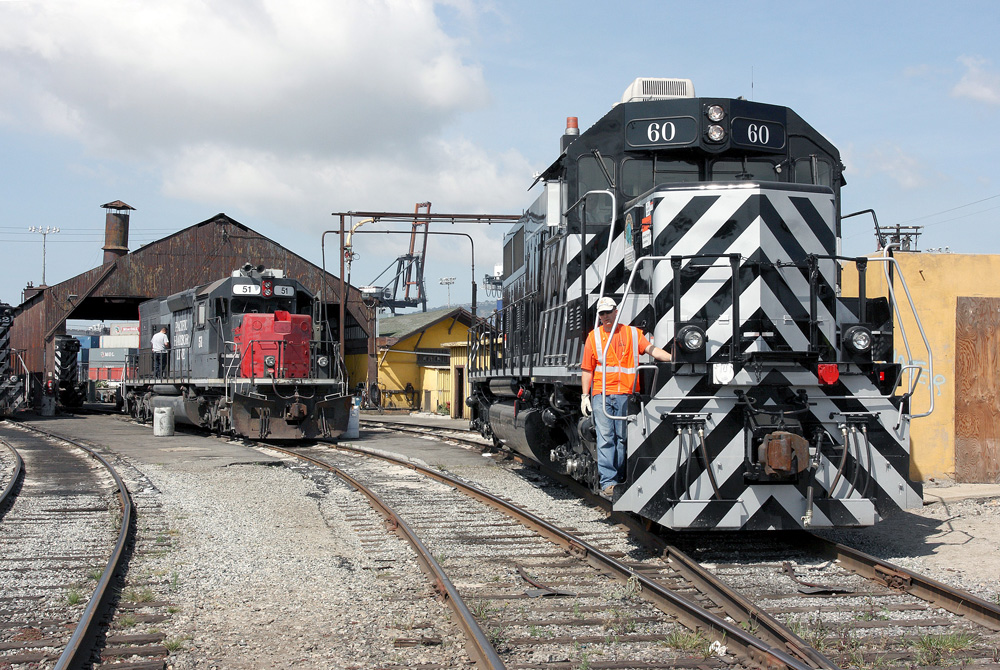
The Pacific Harbor Line is railroading at its best. In many ways it reflects railroading as it used to be.
Consider the good old days. Lots of railroads, various locomotive builders and plenty of paint schemes, not to mention open stations and friendly and courteous employees. If you didn’t like what you saw in one part of the city, you’d simply travel elsewhere and find an entirely different experience.
I grew up in Southern California in the ‘60s. Filling up my car’s gas tank with 36 cent or less a gallon gas, I could explore Southern Pacific from my San Fernando home, then head to downtown Los Angeles. There I would find Santa Fe, and Union Pacific, not to mention what was left of the once expansive Pacific Electric system. A little farther east would be Los Angeles Junction. Other areas would include Santa Fe’s Pasadena station and UP’s in Riverside. Pointing the car south to the ports I could explore Harbor Belt Line, not to mention the various scrap yards on Terminal Island.
Today? Today it’s Union Pacific, and BNSF. Everywhere. There’s still a few short lines in the area but nothing like there used to be. Sigh.
Not really. While today’s railroading is streamlined and definitely more mundane, there are still bright spots that bubble to the surface that prove railroading as we might think we remember it is alive and well. It just takes a little more digging to find it.
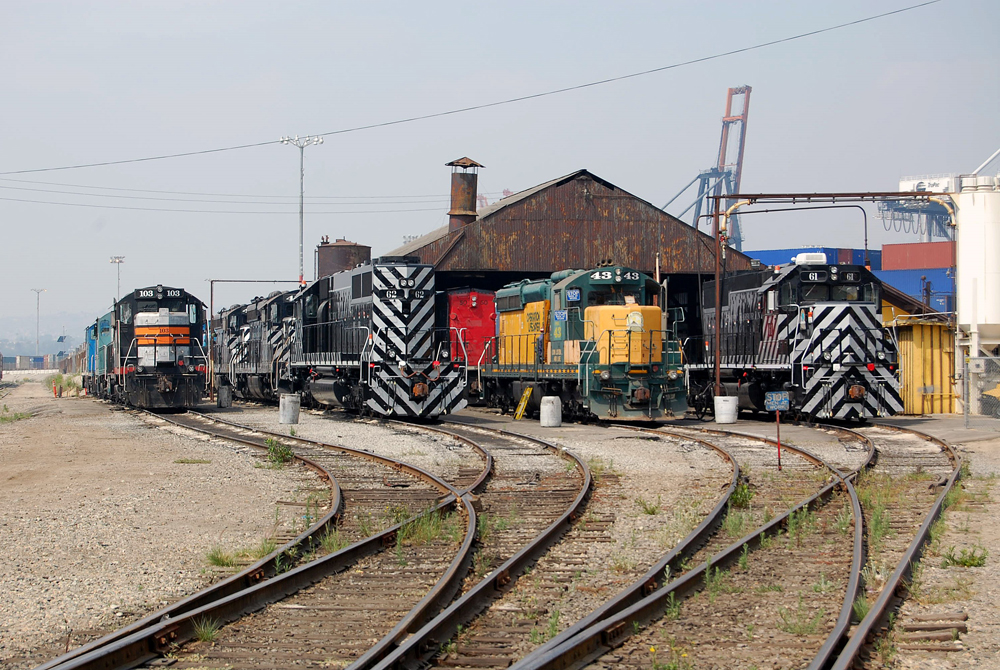
One has to look no farther than Pacific Harbor Line in the Wilmington area of the ports.
Basically, PHL took over and expanded the role of Harbor Belt Line. Owned by the three major railroads, it served the harbor area. But it was understaffed with ancient power supplemented by equipment from its owners. It was a holdover from the past that to the outside observer never seemed to quite be up to its role.
Then, in 1998 Pacific Harbor Line was born. Operated by Anacostia Rail Holdings Company, the railroad operates 18 route miles of track. Combined with the various yard facilities and leads, the total miles of track is almost 60. Today it provides rail service to the entire port complex through interchange connections with BNSF and Union Pacific.
The first days of the operation were interesting to say the least. The lone service facility sported an open-air engine house that probably never saw a coat of paint after being built in 1925. The interior became a haven for winged creatures of all sorts and if you had a good shirt, you soon learned not to wear it.
Motive power was a crazy quilt of used locomotives from around the country, that included former New Haven EMD switchers, a collection of former road-switchers from Chicago & North Western, Southern Pacific, Southern, among others. Even the former Harbor Belt EMD GP7 was kept in service.
It was colorful and it was a mess. The railroad and various port authorities invested millions to upgrade the facilities, clean up the right-of-way, straighten and replace well-used rail, and ultimately, built a new state-of-the-art locomotive facility where none existed before.
Today’s Pacific Harbor Line is modern, efficient, and well-run. Its people take pride in its being. Modern power has replaced the hodge podge of hand-me-downs that once lived there, and repeated visits by fans are rewarded by not only PHL power but various demonstrators from locomotive manufacturers wishing to show off their latest wares.
Just like the old days of railroading. What are your favorite examples?
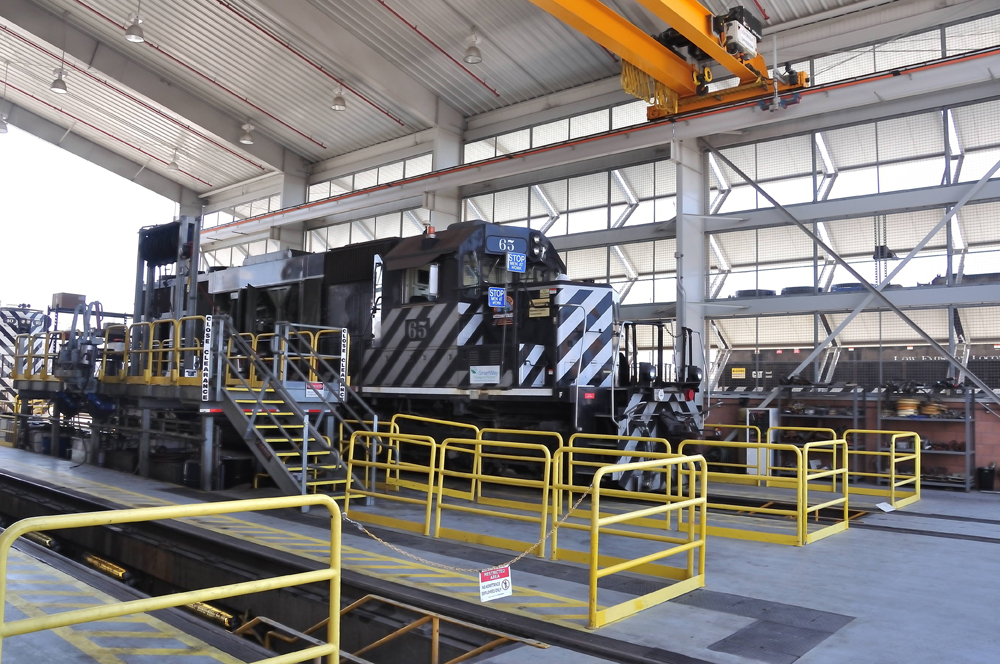
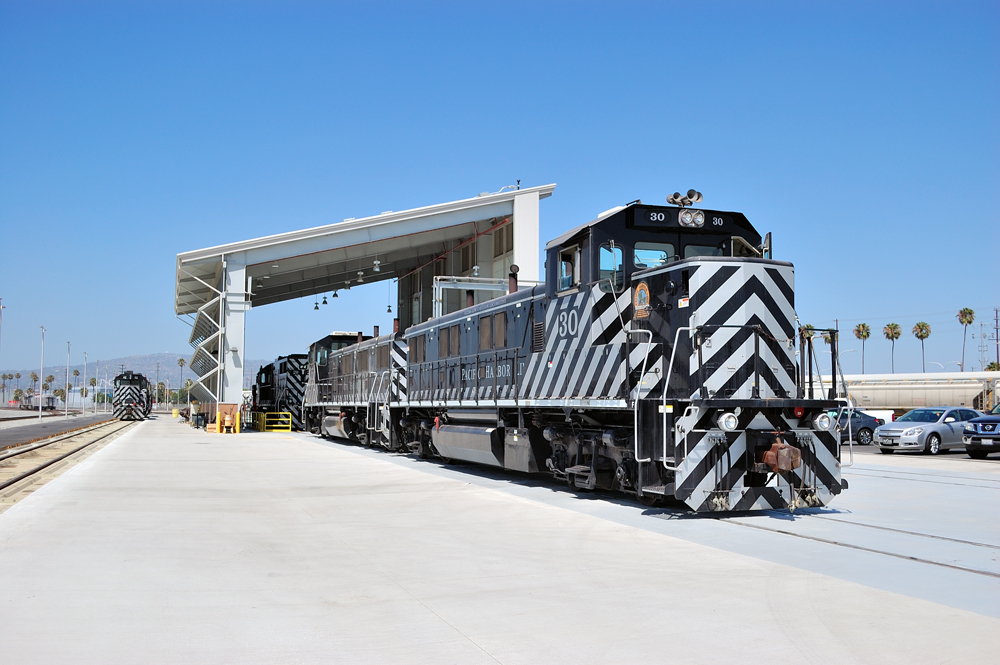
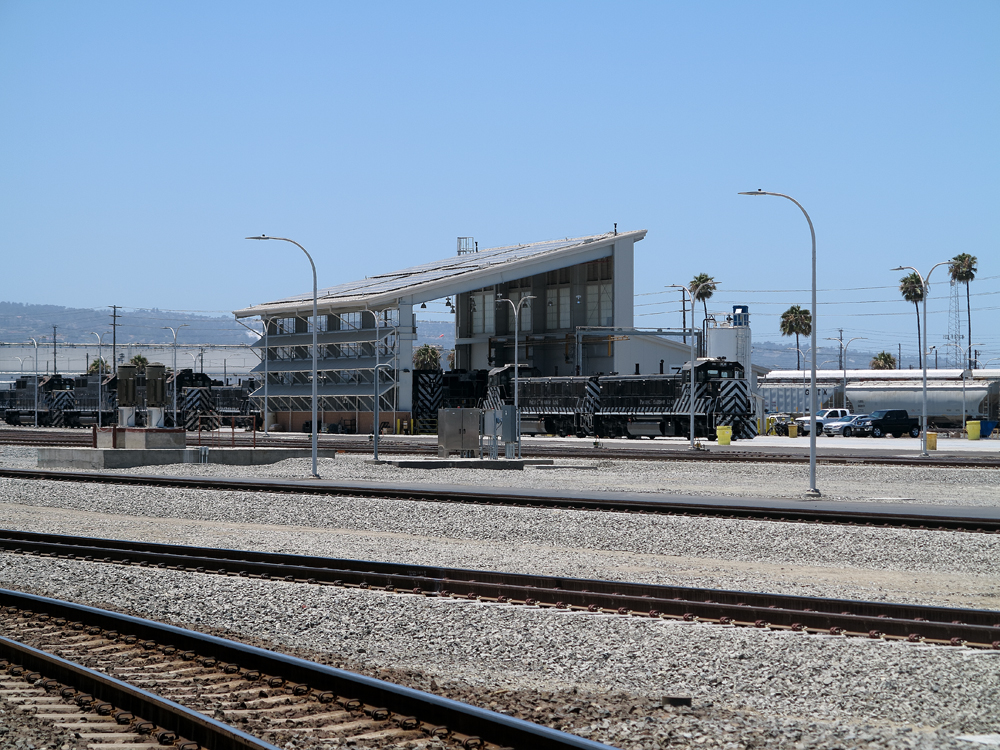
Updated to correct the name of the railroad with EMD switchers and year PHL was born.






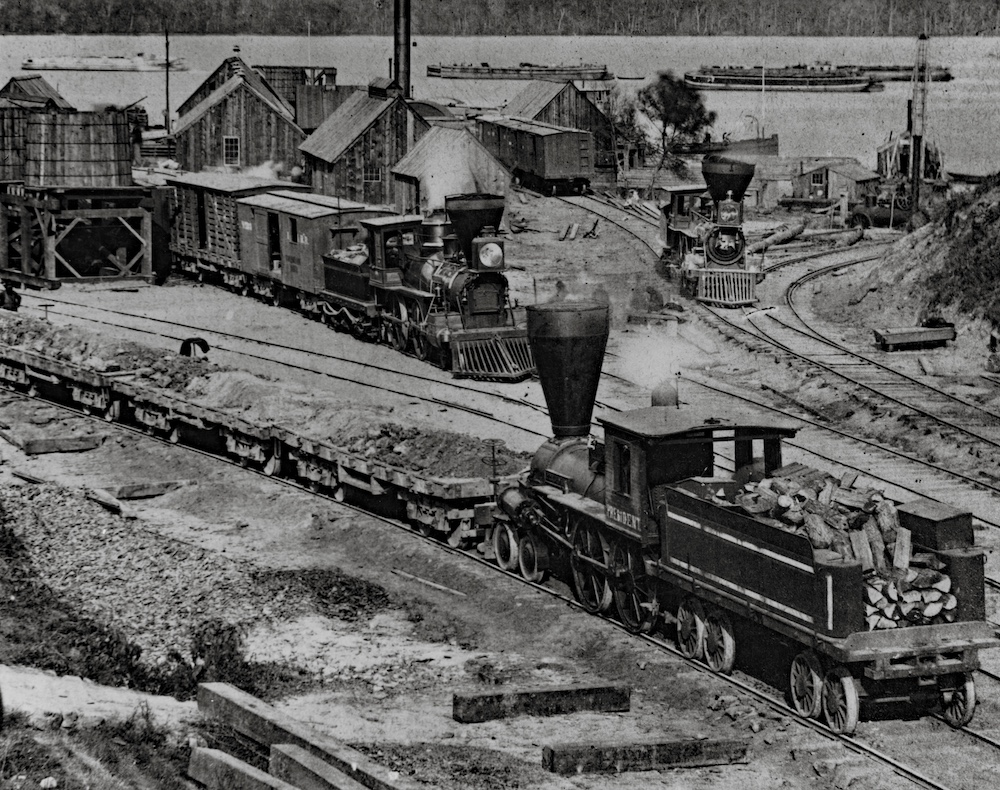
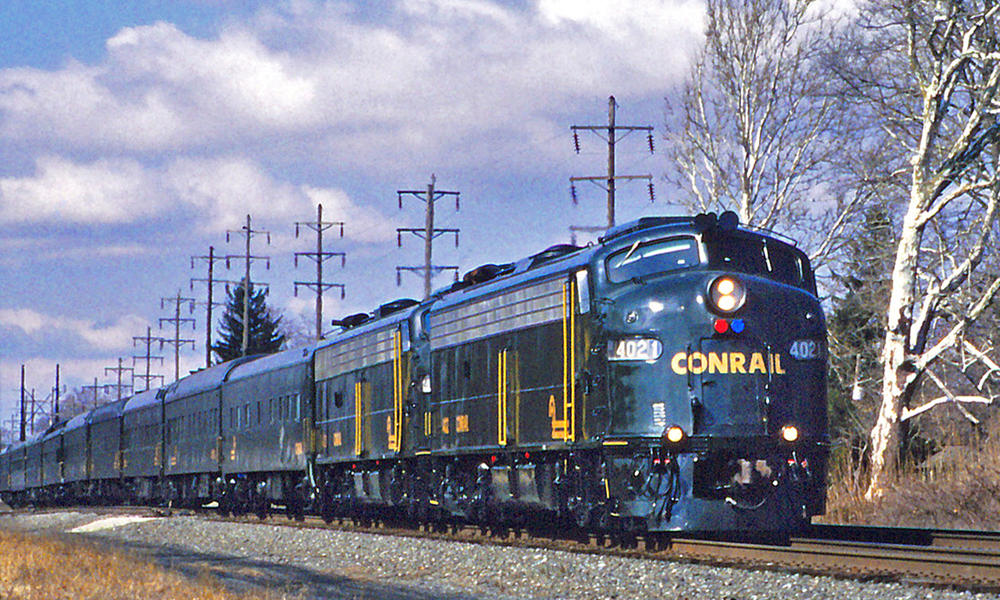
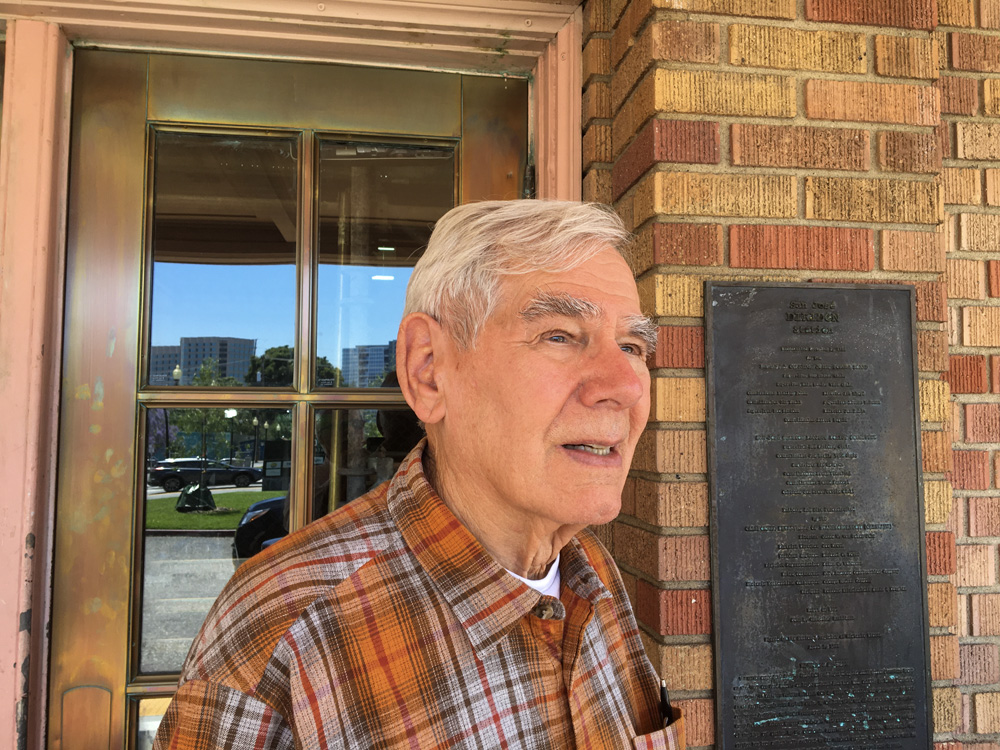
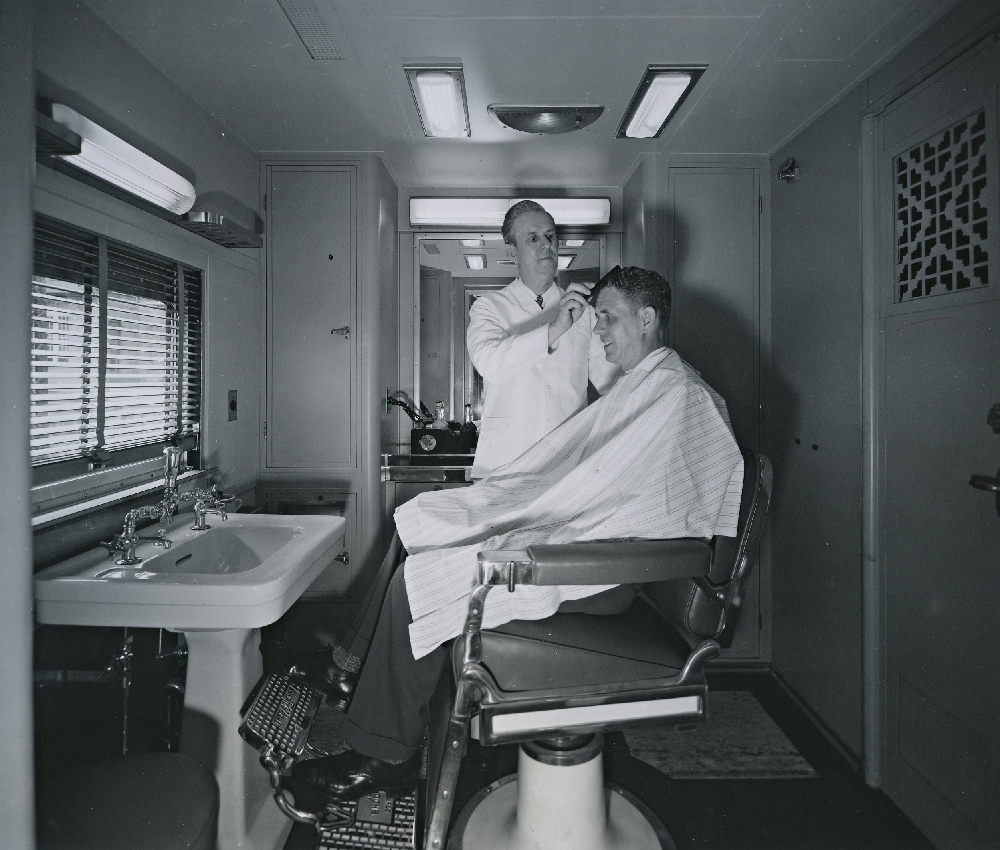




Love the Santa Fe “Zebra” scheme.